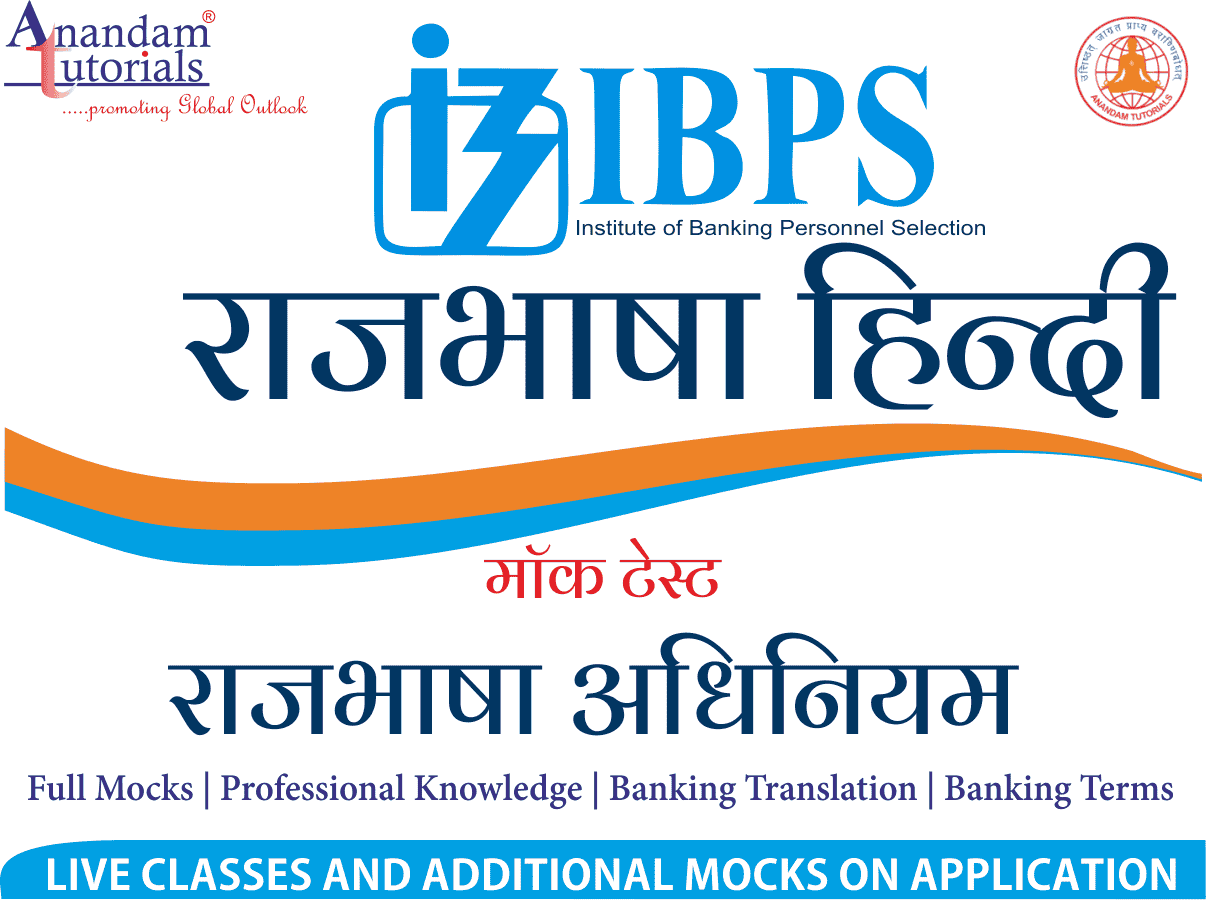Here are 10 hard-level multiple choice questions (MCQs) on the Hindi Language Act tailored for the Rajbhasha Adhikari Exams like IBPS SO, RBI, NABARD, SBI, LIC, NICL, NIACL and the others.
1. The Official Languages Act, 1963 was enacted to implement which Constitutional Article's provision?
A. Article 343(1)
B. Article 351
C. Article 343(2)
D. Article 344(1)
E. Article 346
Answer: C. Article 343(2)
Explanation:
While Article 343(1) declares Hindi in Devanagari script as the official language, Article 343(2) provided for the continuation of English for official purposes for 15 years from 1950. To extend the use of English beyond 1965, the Official Languages Act, 1963 was enacted. Hence, option C is correct.
2. Section 3(1) of the Official Languages Act, 1963 provides that English may be used:
A. Along with Hindi indefinitely for Union communication
B. As the sole language of communication between states
C. Only until 1970 unless extended
D. For translation of parliamentary bills only
E. As a second official language for all central acts
Answer: A. Along with Hindi indefinitely for Union communication
Explanation:
Section 3(1) allows continuation of English for official purposes of the Union along with Hindi even after 1965. There is no fixed deadline, and the Act enables indefinite dual use.
3. Under which section of the Official Languages Act is Hindi translation of central Acts required?
A. Section 4
B. Section 6
C. Section 7
D. Section 5
E. Section 3
Answer: D. Section 5
Explanation:
Section 5 mandates that all Central Acts, Ordinances, and amendments must be published in Hindi translation, authenticated by the President.
4. Section 7 of the Official Languages Act deals with:
A. Use of Hindi in communications between Centre and State
B. Committee on Official Language
C. Publication of rules and notifications in Hindi
D. Use of Hindi in the judiciary
E. Procedure for official correspondence in Hindi only
Answer: C. Publication of rules and notifications in Hindi
Explanation:
Section 7 provides for publication in Hindi of rules, orders, notifications issued under a Central Act that were originally in English. This helps promote transparency and accessibility.
5. According to the Act, Hindi can be used for official communication between:
A. Any two states compulsorily
B. The Centre and States that have adopted Hindi
C. The Supreme Court and High Courts
D. Any Union Territory and the Centre regardless of language
E. Only the Ministry of Home Affairs
Answer: B. The Centre and States that have adopted Hindi
Explanation:
The Act permits Hindi to be used for communication between the Centre and those states that have adopted Hindi as their official language. This is not compulsory for non-Hindi states.
6. Which of the following statements about Section 3 of the Official Languages Act is INCORRECT?
A. English continues as an official language unless Parliament decides otherwise
B. English must be used in all High Court judgments
C. English and Hindi can both be used for Central legislation
D. English remains in use in Parliament alongside Hindi
E. It does not restrict states from using their own languages
Answer: B. English must be used in all High Court judgments
Explanation:
Section 3 deals with use of Hindi and English for Central Government purposes, not judiciary. High Courts may use local official language with Presidential consent. So, B is incorrect.
7. Which provision ensures that Hindi terms must also appear in Central laws published in English?
A. Section 3(3)
B. Section 5(2)
C. Section 6(1)
D. Section 4
E. Section 7(2)
Answer: B. Section 5(2)
Explanation:
Section 5(2) of the Act ensures that translated Hindi versions of Central Acts carry legal equivalence to English versions. It does not mandate interspersed Hindi in English laws, but Hindi versions must be published.
8. The Committee on Official Language was constituted under:
A. Article 344(1)
B. Section 4 of the Official Languages Act
C. Article 351
D. Section 3(2)
E. Presidential Order, 1960
Answer: B. Section 4 of the Official Languages Act
Explanation:
Section 4 provides for the constitution of the Committee on Official Language to review the progress of Hindi's use and recommend its implementation across ministries.
9. The Official Languages Rules, 1976 were enacted under powers given in:
A. Section 7 of the Official Languages Act, 1963
B. Article 343 of the Constitution
C. Section 8 of the Official Languages Act
D. Section 3(1) of the Act
E. Section 9 of the Act
Answer: C. Section 8 of the Official Languages Act
Explanation:
Section 8 empowers the Central Government to make rules for carrying out provisions of the Act. The Official Languages Rules, 1976 were framed using this power.
10. Under the Official Languages Act, which language has NOT been prescribed for use in official records of the Centre?
A. Hindi
B. English
C. State regional languages
D. Bilingual records (Hindi-English)
E. Sanskrit
Answer: E. Sanskrit
Explanation:
Only Hindi and English are prescribed for official purposes of the Union under the Act. While regional languages can be used at the state level, Sanskrit is not used for official Union records.
For more, click here
Rajbhasha Adhikari Courses and the others:
- RBI Grade B Descriptive English
- SEBI Grade A Descriptive English
- NABARD Grade A Descriptive English
- NPS Trust Grade A Descriptive English
- RBI/NABARD Rajbhasha Adhikari
- PFRDA Officer Grade A Descriptive English
- SIDBI Grade A Descriptive English
- RBI Grade B Descriptive English
- IBPS SO Descriptive English
- SBI PO Descriptive English
- IBPS SO Rajbhasha Adhikari
- IBPS SO Rajbhasha Adhikari Mains
- EXIM-Bank Rajbhasha Adhikari Written Exam
- GIC AM Descriptive English
- NICL AO Descriptive English
- NICL Promotional Exam Descriptive English
- LIC AAO Descriptive English
